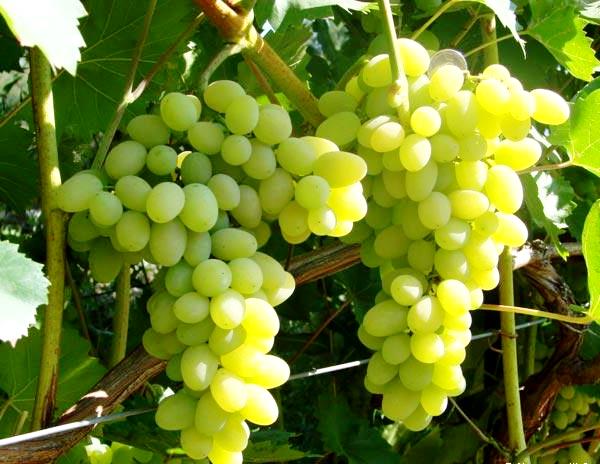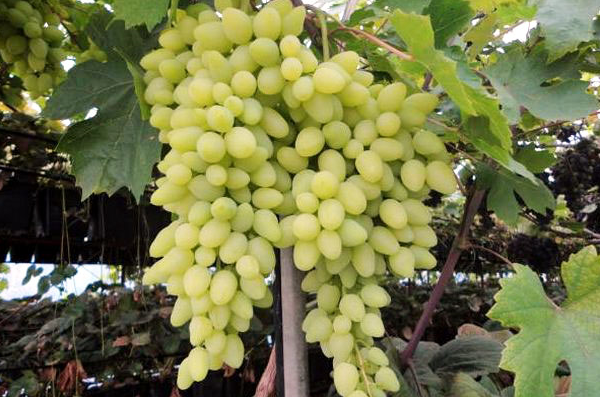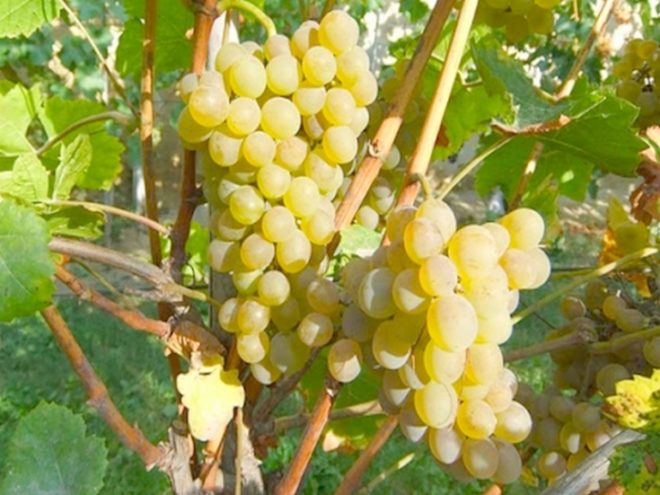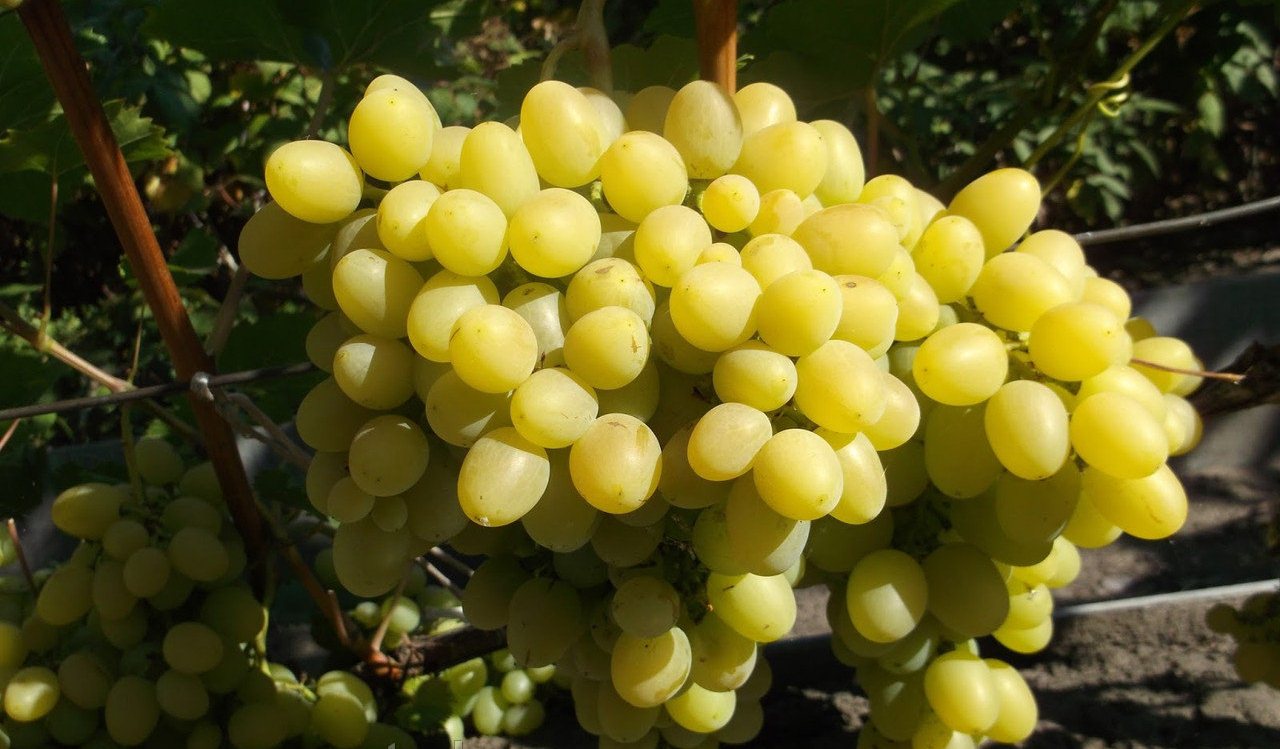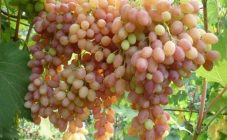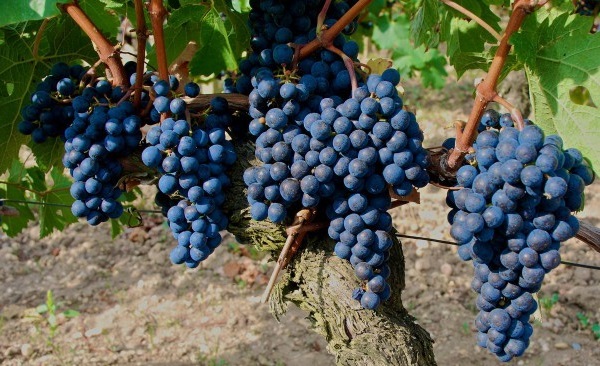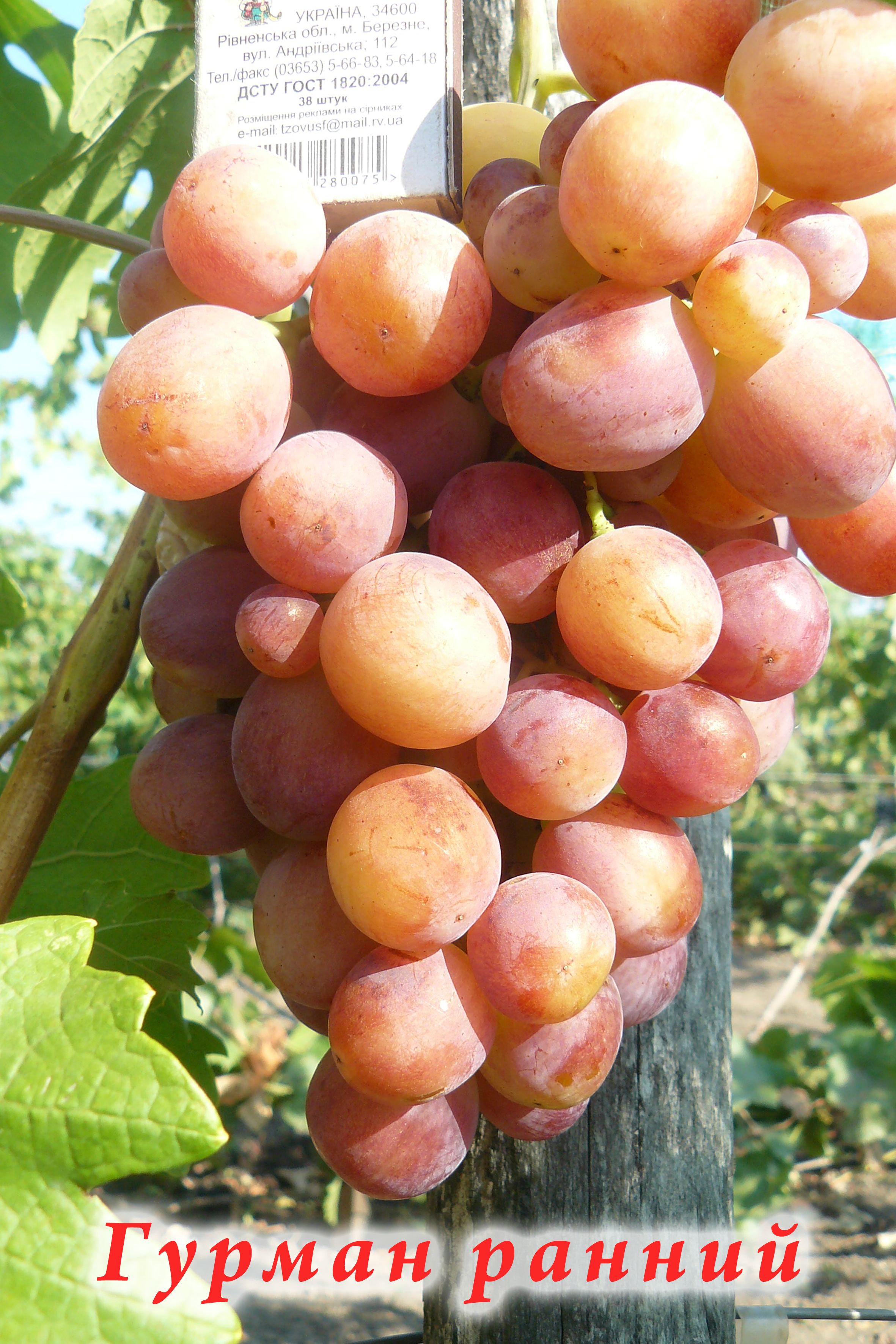Content:
The Laura grape variety is always popular with winegrowers. It is one of the most common amber grapes cultivated in summer cottages.
This variety was created by Ukrainian breeders. At first, it was a hybrid that was very popular with professionals and amateur winegrowers.
As a full-fledged variety, it was registered in Russia under the name Flora. True, many people call this grape variety Laura. Although, in reality, it is one and the same plant.
This grape variety was obtained in Odessa by crossing Muscat de San Valle, Husaine and Hamburg Muscat. Subsequently, the hybrid was crossed with the Koroleva Tairovskaya variety and several Central Asian species. The result of this complex and lengthy combination is the Laura grape.
Main characteristics
People who love viticulture and grow a varietal vine on their site will be interested to learn more about the Laura variety.
Laura grapes have the following variety description:
- Foliage of a dark green hue, classic shape.
- Large bunches of grapes consist of oblong berries, each of which is more than three centimeters long and weighs up to ten grams. The larger the grapes, the more they ripen, and this negatively affects the taste characteristics. Therefore, it is preferable to grow shrubs with a lower rootstock.
- The Flora grape, as the variety is sometimes called, tastes like a mixture of nutmeg and sweet and sour notes. Everything is well balanced and does not cause rejection. Sometimes the amount of sugar is influenced by high humidity in the air and soil.
- Laura grapes are highly resistant to low temperatures and can withstand frosts down to -23 C.
Ideally, seedlings of this variety begin to bear fruit two or three years after planting in a permanent place. In this case, much will depend on climatic conditions and compliance with the rules for caring for the vine. For example, in the middle zone of our country, and in particular in the Moscow region, the first harvest can be taken only after five or six years.
These are sweet and juicy grapes with high acidity (up to 8 grams) and sugar content (up to 20 percent). Values may vary slightly depending on growing and care conditions:
- landing region;
- climatic conditions;
- soil type;
- industrial or amateur cultivation.
An interesting feature of the variety is the equal size and weight of the brushes on the bush. The vine is of medium size with a large number of fruitful shoots. The berries have a dense and juicy flesh, and they are quite firmly connected in a cluster. It is worth noting that grapes of this type practically do not crumble even after full maturation.
Since the variety has only female peduncles, it is necessary to plant a number of so-called pollinators for pollination. But many growers prefer to do it by hand. This method helps in regulating the number of inflorescences.
Growing and care rules
To get a good harvest, you must follow the rules of agricultural management of the vine.
Landing
The vineyard should be planted on soft soil. You should not grow vines on soils such as:
- clayey;
- loamy;
- saline.
Varietal grapes grow poorly and bear fruit at high humidity. Therefore, in areas with a high level of groundwater, you will have to first build a good drainage system.
Like any other grape variety, it loves a lot of sun, and therefore it is necessary to plant it on the southern side of the site, preferably protected from winds and drafts.
Reproduction methods
There are two options for breeding Laura grapes:
- seedlings;
- cuttings.
In the first case, a layering is separated from the main bush and sprinkled with earth. When the root system is formed at the shoot, you can transplant it to a permanent place.
The distance between the bushes should be more than one and a half meters. Only after such preparation can young plants be planted. The best time for this operation is late summer or early autumn.
Watering
This variety needs good watering. The amount of watering depends not only on the area where it is grown.
- After transplanting, you need to pour a whole bucket of water under the bush. After that, mulch the soil to retain moisture longer.
- The amount of watering increases as the plant develops. Up to six buckets of water are poured under an adult bush.
- During fruiting, the amount of moisture introduced is ten liters.
Trimming
In order for the harvest to ripen faster and the brushes to be larger, it is necessary to regulate the number of fruit eyes on the bush. The amount and type of pruning depends on the age of the grapes. On the bushes up to three years, only the middle clusters are left, removing the upper and lower ones. In the fall, the bushes are cleared of dead branches and leaves.
Top dressing is carried out throughout the life of the grapes. It is best to apply manure. It contains all the necessary trace elements and substances.
Disease and pest control
Most often, grapes of the Laura species are affected by such a disease as oidium. Treatment with a special composition containing sulfur, potassium permanganate and chemicals will help to avoid this. This method will help protect the bushes from fungal spores.
Processing is carried out before preparation for wintering. The soil is treated with fungicides against black rot.
The main pests infecting bushes are:
- aphid;
- weevils;
- grape mites and other insects.
To protect against rodents for the winter, the bushes are treated with lime or wrapped with covering material.
The main advantages of the variety and its individual disadvantages
The main advantages of this grape variety are as follows:
- Early maturation of the brushes.
- Excellent pollination of flowers.
- High yield of the variety.
- Resistant to diseases such as mildew and gray mold.
- High frost resistance.
- Good keeping quality and the possibility of long-term storage of berries.
The disadvantages include:
- A huge number of bunches, which reduces the taste of ripe berries.
- A sufficiently thin skin can be damaged by wasps, and thus the brushes lose their presentation.
This is basic information about this variety that may be of interest to beginner winegrowers.
